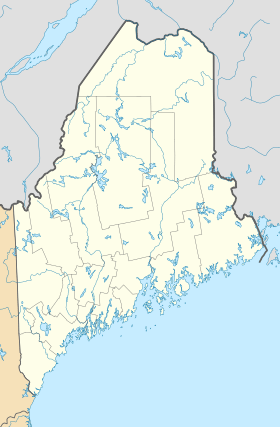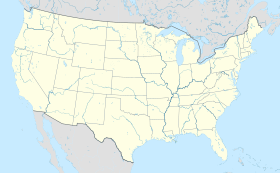Fort Kent (fort) facts for kids
|
Fort Kent
|
|
 |
|
| Nearest city | Fort Kent, Maine |
|---|---|
| Built | 1839 |
| NRHP reference No. | 69000005 |
Quick facts for kids Significant dates |
|
| Added to NRHP | December 1, 1969 |
| Designated NHL | November 7, 1973 |
Fort Kent State Historic Site is a Maine state park in the town of Fort Kent, Maine. Located at the confluence of the Fish and Saint John Rivers, it includes Fort Kent, the only surviving American fortification built during border tensions with neighboring New Brunswick known as the Aroostook War. The park features an original log blockhouse, which is open for visits in the summer. The fort was added to the National Register of Historic Places in 1969 and declared a National Historic Landmark in 1973.
Description
Fort Kent stands on a slight rise overlooking the Saint John River, just west of the mouth of the Fish River. The Saint John is in this area part of the Canada–United States border, and the region on both sides of the river was until the 1842 Webster-Ashburton Treaty territory disputed by both the United States and the United Kingdom, of which New Brunswick was then a colonial province.
All that remains of Fort Kent is a blockhouse, two stories in height, measuring 23 feet 5 inches (7.14 m) square. It is built out of hand-hewn cedar timbers, and has an overhanging second story and a pyramidal roof. Each side of the roof is pierced by a gabled dormer. The main entrance faces west, and is flanked by four rifle ports on the first floor, and there are twelve rifle ports on the first floor of each of the other three sides. On the second floor, which hangs 15 inches (0.38 m) over the first, there are eleven rifle ports on the east and west sides, and fifteen on the north and south sides. There are two cannon ports on the first floor north and south sides. The interior has been modestly disturbed to install heating and plumbing, and to provide for museum displays.
History
The boundary between Maine and New Brunswick was a recurring subject of disagreement following the 1783 Treaty of Paris, in which Great Britain recognized the United States. Part of the eastern border was fixed after the Jay Treaty of 1797, but the upper Saint John River area remained disputed. Both Maine and New Brunswick pressed development of the area to solidify their claims, but this consequently raised tensions beginning in the 1820s, with authorities from each government acting against the other's settlers and agents.
Construction of Fort Kent, named for Governor Edward Kent, was begun 1838 as tensions reached their height. It was one of a series of forts built by the state along the southern banks of the Saint John River, and is the only one surviving. (The blockhouse at Fort Fairfield is a 20th-century reconstruction.)
In 1839 the arrest of a US government agent in New Brunswick prompted Congress to authorize 50,000 federal troops for assignment to northern Maine. At this time the fort was enlarged to include barracks officers' quarters, and other buildings. General Winfield Scott was sent to the area with power to negotiate a settlement. Scott and New Brunswick Lieutenant Governor John Harvey, who had a long-established friendship, were able to successfully reduce tensions until the Webster-Ashburton Treaty was negotiated in 1842.
United States troops remained at the fort to 1845. After the crisis passed, the fort was sold into private hands. In 1891 the property was sold to the state of Maine for the purpose of establishing a park. The state did no substantive work on the site until 1959, when the historic site was formally established. The museum is now maintained by the Fort Kent Historical Society.



